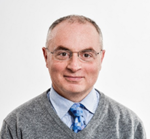Understanding Aircraft Noise: From Fundamentals to Design Impacts and Simulations

- Based on the AIAA book: A Filippone: Advanced Aircraft Flight Performance, Including Environmental Performance (Chapters 17 to 20), 2nd edition.
- All students will receive an AIAA Certificate of Completion at the end of the course
OVERVIEW
Aircraft noise is a prominent source of media headlines and a concern for operators and decision-makers, particularly at a time when further airport expansion is made difficult by land planning restrictions and various environmental regulations at local and international level. This course will address understanding of the impact of aviation noise. It will focus on the engineering aspects of generation, propagation and mitigation of noise from aircraft powered by gas turbine engines. There will be live demonstrations with the FLIGHT-X environmental simulation program. This training is based on the AIAA book: A Filippone: Advanced Aircraft Flight Performance, Including Environmental Performance (Chapters 17 to 20), 2nd edition.
LEARNING OBJECTIVES
- Understand the role of international and local regulations in noise emissions and management
- Understand key metrics used for assessment of noise annoyance and certification
- Understand the sources of noise from aircraft: aerodynamics and propulsion
- Understand the role of operational changes on noise emissions
- Learn about noise measurement techniques
- Learn about basic noise simulation strategies
- See detailed course outline below
Type of Course: Instructor-Led Short Course
Course Length: 2 days
AIAA CEU's available: Yes
This course is also available on-demand.
- Psychoacoustics effects of aircraft noise (commercial and military)
- Basic definitions of sound and noise
- Airports regulations, noise certificates, and aircraft noise trends
- Legal aspects of aircraft noise (including ICAO, FAA)
- Questions and Answers
- Instantaneous noise metrics
- Tonal and broadband noise
- Time-averaged metrics (ANSI definitions)
- Integral metrics (EPNL, SEL)
- Short- and long-term metrics (day, season, year)
- Noise quotas and Quota Counts (QC)
- Practical Demo: interpreting key noise metrics
- Questions and Answers
Section 3: Aircraft noise measurements techniques
- Standard equipment, description, accuracy (SLM, or sound level meters)
- Noise event identification
- Measurement locations; integration with other systems (FDR, GPS, ADS-B/Mode-S)
- Automatic noise tracking at airfields (FIDS)
- Questions and Answers
Section 4: Practical demo of noise measurements
- Statistical analysis and data processing
- Beamforming techniques
- Comparison between departure and arrival noise signatures
- Noise characterisation (turbofan, turboprop)
- Questions and Answers
Section 5: Airframe Noise Sources
- Engineering systems and network analysis
- Sources, characterisation, modelling, prediction
- Lifting surfaces noise (broadband noise models)
- Landing gear noise (various alternatives)
- High-lift system noise
- Other non-propulsive noise sources: cavities, wires
- Questions and Answers
Section 6: Propulsion Noise Sources, Part I
- Network analysis of propulsion noise
- Fan system noise
- Acoustic liners
- Questions and Answers
Section 7: Propulsion Noise Sources, Part II
- Engine core noise (compressor, combustor, gas turbines)
- Jet noise and corresponding models (single and dual stream jets)
- Jet noise shielding
- Auxiliary Power Unit (APU) noise
- Practical Demo: Use of APU on the ground
- Questions and Answers
Section 8: Propeller and propfan noise
- Nature of noise generation
- Tonal noise modelling
- Broadband noise models
- Minimum-noise design and configurations: synchrophasing, etc.
- Contra-rotating propeller noise
- Practical Demo: historical review of contra-rotating propeller noise
- Questions and Answers
Section 9: Introduction to aircraft noise propagation
- Noise propagation models, focus on long-range issues
- Effects of atmospheric winds and humidity
- Low-order methods: Noise-Power-Distance (NPD)
- High-order methods
- Wave equation
- Ray tracing methods
- Other field methods
- Questions and Answers
Section 10: Practical demo of aircraft noise propagation
- Effects of topography
- Ground reflection, noise shielding, background noise
- Questions and Answers
Section 11: Aircraft noise reduction by trajectory optimisation
- Elements of multi-objective optimisation
- Trajectory constraints and typical operations
- Noise abatement procedures: NADP (noise abatement departure procedures)
- Practical Demo: Steep-descent, continuous descent, displaced landing; noise breakdown analysis
- Questions and Answers
Section 12: Noise footprints, effects of multiple aircraft movements
- Noise mapping at airfields
- Role of best-practice methods for airfield noise mapping
- Practical Demo: Examples of noise footprints (single/multiple aircraft operations)
- Case Study: London Heathrow airport
- Questions and Answers

Prof. Antonio Filippone holds a chair in computational aerodynamics at the School of Engineering, University of Manchester. At Manchester he teaches rotorcraft modules, aerodynamics and design courses. He has contributed over 150 technical papers, 4 books, 12 book chapters in the fields of applied aerodynamics and afferent fields. He is a Senior AIAA member, a Fellow of the Royal Aeronautical Society of London, a Fellow of the Institute of Mechanical Engineers and a member of the Vertical Flight Society. As an AIAA member, he has contributed in the past to the applied aerodynamics and flight mechanics technical committees. This course has been running for 7 years both in person and online.
AIAA Training Links
For information, group discounts,
and private course pricing, contact:
Lisa Le, Education Specialist (lisal@aiaa.org)
